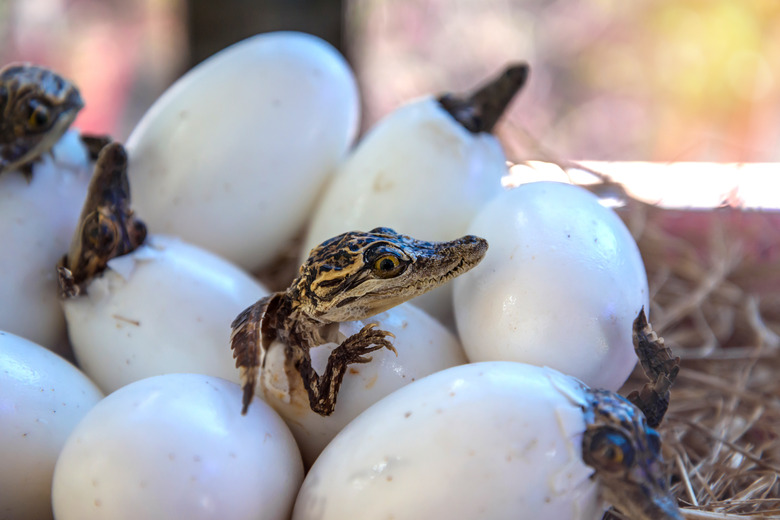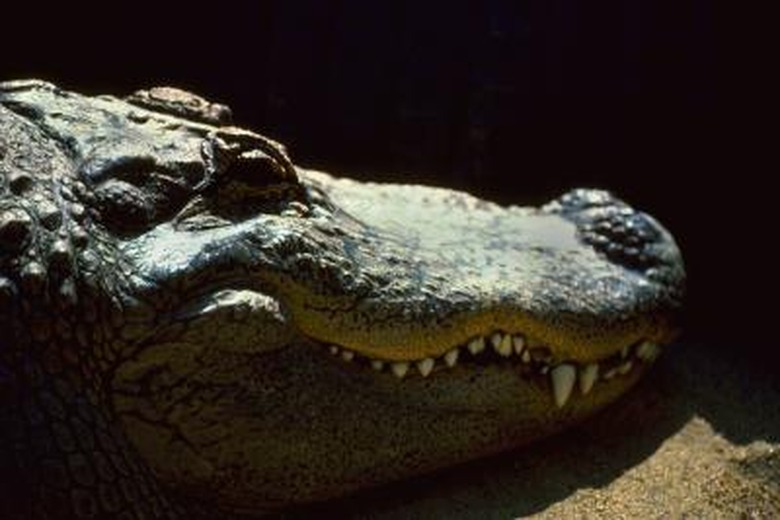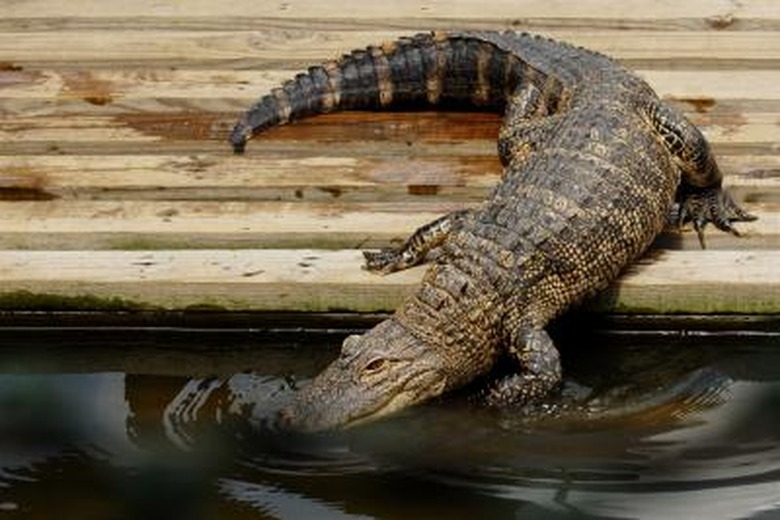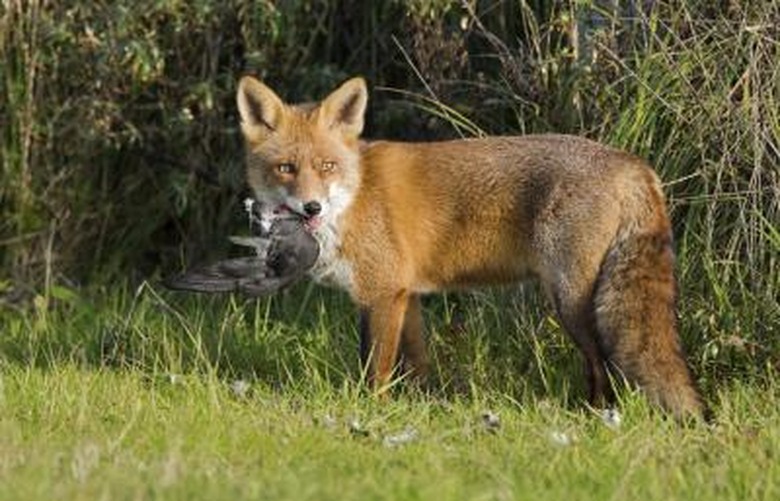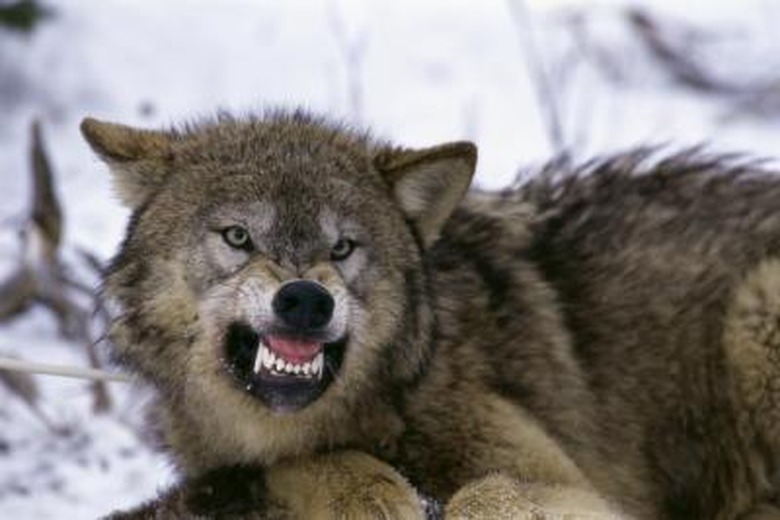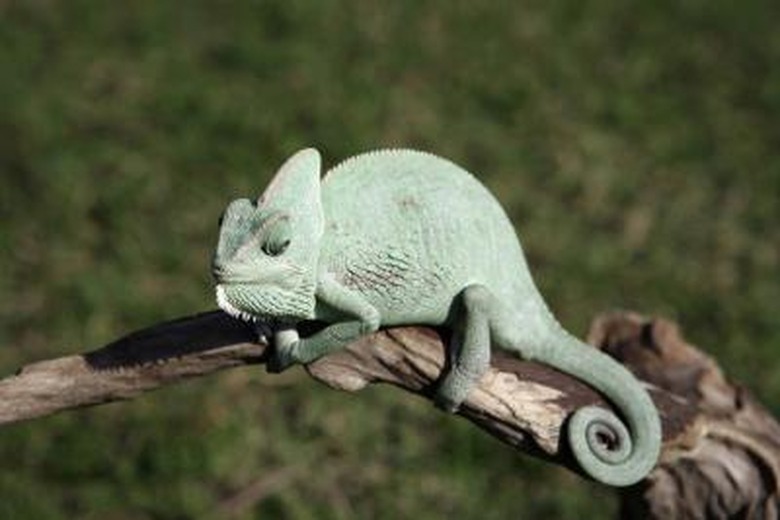What Are The Differences & Similarities Between Mammals & Reptiles?
Mammals and reptiles, two of the five classes of vertebrates, are among the most complex animals on Earth. There are approximately 8,240 species of reptiles, including snakes, turtles and lizards, which make it a more diverse group than mammals, of which there are about 5,400 species. Mammals, which include whales, bears and primates, are believed to have evolved from reptiles 240 million years ago.
TL;DR (Too Long; Didn't Read)
Mammals and reptiles have some similarities — for example, they both have spinal cords — but have more differences, especially with respect to skin and temperature regulation.
Body Plan
Body Plan
As vertebrates–animals with backbones that protect a nerve cord that runs the length of the body–mammals and reptiles have a common body plan. Among the characteristics they share are bilateral symmetry, a sophisticated nervous system, well-developed sense organs, a respiratory system that involves the pharynx or throat, a complex internal skeleton, and reproductive and excretory systems that overlap. Like most vertebrates, mammals and reptiles reproduce sexually.
Ear and Jaw Bones
Ear and Jaw Bones
The lower jaw of mammals consists of one bone that is firmly attached to the skull. Conversely, the lower jaw of reptiles is made up of multiple bones. Biologists believe that the bones that constitute the reptilian jaw evolved into the three middle ear bones found in mammals. Reptiles have only one ear bone.
Reproduction
Reproduction
Fertilization is internal in most reptiles and mammals. The majority of reptiles lay eggs; most mammals give birth to live young. There are exceptions, however. Some snakes, including boas, produce live offspring. Two primitive kinds of mammals–the echidna and the duck-billed platypus, known collectively as monotremes–lay leathery eggs similar to those of reptiles.
All female mammals, including monotremes, have mammary glands that produce milk, allowing them to nurse their young. Female reptiles lack mammary glands, and most species abandon their offspring soon after they hatch.
Cardiovascular System
Cardiovascular System
The mammalian heart consists of four chambers, two ventricles and two atria. One channel delivers oxygenated blood to the organs, while the other directs blood to the lungs for re-oxygenation. As a result, mammals are warmblooded, which means that they can generate heat and keep their body temperature constant regardless of their environment.
By contrast, reptiles have three-chambered hearts with two ventricles and only one atrium. (Crocodilians are sometimes considered to have four-chambered hearts because the atrium is partially divided.) Unlike mammals, reptiles are exothermic or coldblooded, which means their body temperature depends on external conditions. As a result, mammals can survive in habitats that are too frigid to support reptile life.
Teeth
Teeth
Mammals have specialized teeth, such as canines for tearing through meat and molars for grinding food. Reptile teeth are uniform in shape, though they might vary in size. Although reptiles' teeth grow continually throughout their lives, mammals grow only two sets. The first set, known as milk teeth, are distinct to mammals.
Skin
Skin
Hair is a defining characteristic of all mammals. Reptiles do not have hair, but they do have scales, which–unlike fish scales–arise in the upper layer of skin, the epidermis, rather than in the dermis layer underneath. Both hair and scales are made of a substance known as keratin. Mammals also have sweat glands; reptiles do not.
Cite This Article
MLA
Alonso, Nathalie. "What Are The Differences & Similarities Between Mammals & Reptiles?" sciencing.com, https://www.sciencing.com/differences-similarities-between-mammals-reptiles-8179273/. 23 April 2018.
APA
Alonso, Nathalie. (2018, April 23). What Are The Differences & Similarities Between Mammals & Reptiles?. sciencing.com. Retrieved from https://www.sciencing.com/differences-similarities-between-mammals-reptiles-8179273/
Chicago
Alonso, Nathalie. What Are The Differences & Similarities Between Mammals & Reptiles? last modified March 24, 2022. https://www.sciencing.com/differences-similarities-between-mammals-reptiles-8179273/
